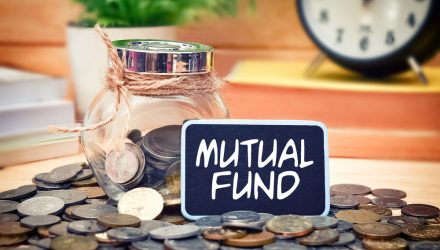Managed futures, a liquid alternatives strategy that has gained attention for its ability to offer performance (or “crisis alpha”) and returns in an environment where bonds and equities are both challenged, aren’t just for hedge funds anymore. Managed futures strategies are offered in mutual funds and exchange traded funds, but how exactly does the top-performing managed futures ETF stack up against its mutual fund peers?
The iMGP DBi Managed Futures Strategy ETF (DBMF) is a managed futures fund designed to capture performance no matter how equity markets are moving. DBMF allows for the diversification of portfolios across asset classes that are uncorrelated to traditional equities or bonds and has brought in over $300 million in flows year-to-date with returns of 26.99% as of 20 July 2022, per the website.
It is an actively managed fund that uses long and short positions within derivatives, mostly futures contracts, and forward contracts. These contracts span domestic equities, fixed income, currencies, and commodities (via the fund’s Cayman Islands subsidiary).
DBMF takes long positions in derivatives with exposures to asset classes, sectors, or markets that are anticipated to grow in value, and it takes short positions in derivatives with exposures expected to fall in value. Under normal market conditions, the fund seeks to maintain volatility between 8%–10% annually and has a management fee of 0.85% and an additional 10 bps for other expenses listed in the prospectus.
So How Does It Stack Up?

AQR offers its AQR Managed Futures Strategy Fund (AQMIX) for institutional investors as well as an R6 share class and an N class that have all performed strongly this year. Access to these strategies, however, has limitations; mutual funds can often be platform-dependent, and as an institutional investor share class, AQMIX requires a minimum investment of $5 million with net expenses of 1.25%.
The Pimco TRENDS Managed Futures Strategy Fund (PQTAX) is a five-star rated fund with Morningstar. The fund has net expenses of 1.83%, and while there aren’t minimum investment requirements, as class-A shares, the fund has front-end sales charges that begin at 5.5% for investments that are less than $50,000, with five breakpoints that end in a 0% charge if investing over $1 million. It means that when investing, an investor pays a fee up front depending on how much they’re investing, unless it is $1 million or more, and then the amount left after paying the fee is what actually gets invested.
DBMF uses managed futures hedge fund strategies but offers this through the ETF wrapper that is available to anyone. While AQMIX has had stronger performance this year, the ease of access to a strategy that has historically been locked away behind hedge funds without the requirements that can come with mutual funds has seen DBMF take off this year with investors.
The position that DBMF takes within domestic managed futures and forward contracts is determined by the Dynamic Beta Engine. Essentially, it averages out the performance of the top 20 managed futures hedge funds and then seeks to replicate that performance. It does so by analyzing the trailing 60-day performance of CTA hedge funds and then determining a portfolio of liquid contracts that would mimic the hedge funds’ performance (not the positions).
DBMF has management fees that are significantly lower than those of hedge funds, allowing the fund to capture more of the alpha potential of the fund performance (fee alpha), without carrying the minimum investment requirements that mutual funds have. The fund is currently rated at four stars with Morningstar.
For more news, information, and strategy, visit the Managed Futures Channel.

